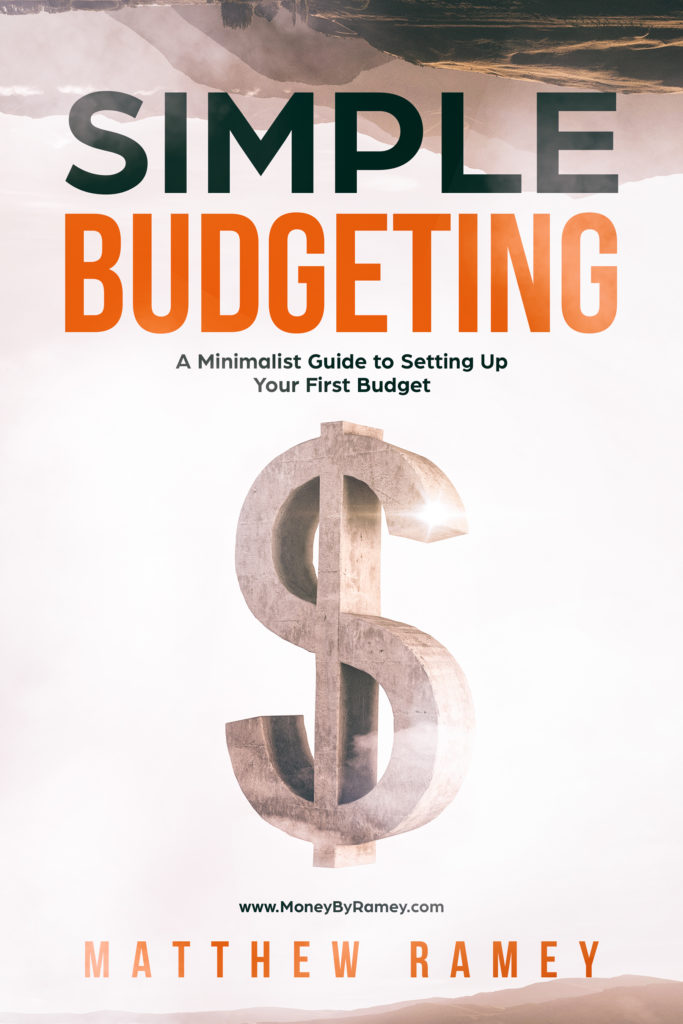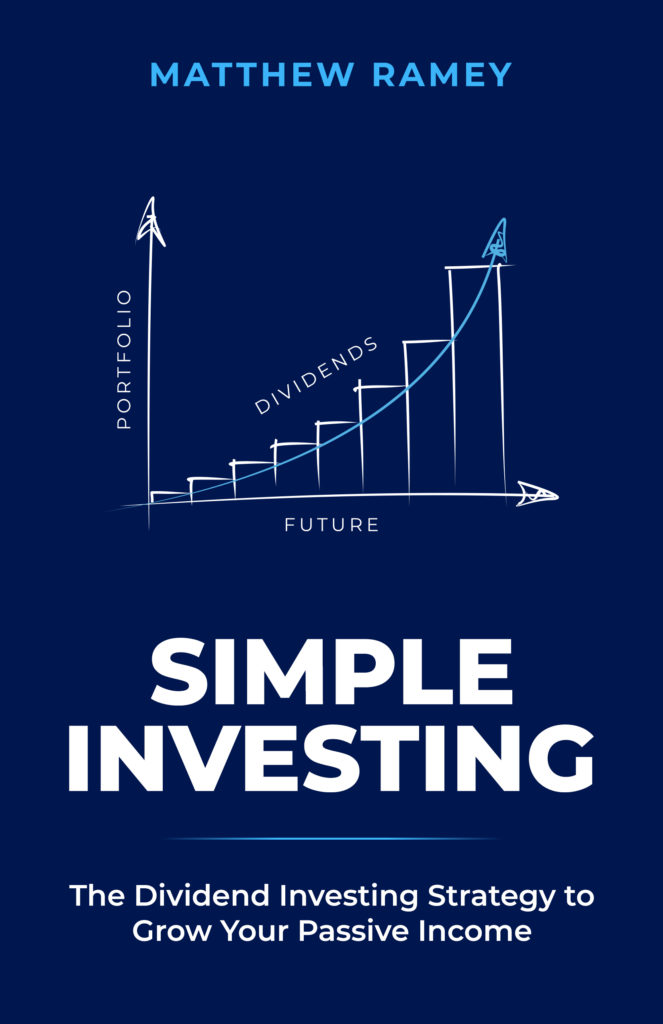The MoneyByRamey Dividend Investing Checklist

Beginning in my early days of the dividend investing journey, I created tools that would help me identify ripe stocks for investment. One of the first tools that I made was the MoneyByRamey Dividend Investing checklist.
This checklist served as a foundation for when I would review stocks for potential investment opportunities. These foundational items still hold firm when I’m examining stocks today. The principles below have allowed me to build up a dividend portfolio nearing the 5-figure mark in annual dividend income!
Be sure to also check out our DRIP Investing Resource page to begin your dividend investing journey today!
Want to Learn Active/Passive Income and Investing Strategies?
Sign up for our Live Free and Div Hard email list to receive exclusive ideas and tips straight to your inbox!
The MoneyByRamey 7-Point Dividend Investing Checklist
#1 – The Company Has a Moat?
The very first item on the checklist that I ask is, “does this company have a moat?” What does it mean to have a moat? Think back to the castle days for a moment. When a castle had a moat, it was much harder for attackers to breach the castle walls. By creating a body of water that surrounded the building, the castle defenses were nearly impenetrable.
The same holds for companies around the world. As Michael Porter’s Five Forces Analysis explains, Company’ Moats’ are those things that the company does exceedingly well that are difficult, if not impossible, for competitors to replicate.
When I am investing in a company, I first begin by asking myself the question – what is this company’s moat? What does the company do well that cannot be replicated by competitors?
In the case of Coke ($KO), their moats would be the Coca-cola flavor as well as the excellent brand recognition. Or in the case of L3 Harris ($LHX), it would be its superior project management and technology skills compared to competitors. Keep in mind that moats can be anything – from products to processes to services.
#2 – The Company is in a Growing Industry
The second item that I check for happens to be, “is the company in a growing industry?” With this question, I look to identify the industry’s future potential, and thus, the company.
Admittedly, there is much subjectivity that goes into this analysis. What one person thinks is a darling of Wall Street another might think is trash. This is where investors must utilize their investing acumen versus their risk appetite.
For instance, I have short positions in oil majors Exxon Mobil ($XOM) and Beyond Petroleum ($BP). Being that the world’s politicians are actively working to put the fossil fuel industry out of business, I would say the upside potential is limited.
However, I remain invested mainly due to two factors:
- The world will still need fossil fuels for the foreseeable future.
- The potential for these companies to pivot into new product lines.
I’m hopeful that while the world works to wind down its dependence on fossil fuels, there can still be a niche sector for these companies. I’m also optimistic that the big oil majors will utilize R&D to help foster new fuel sources that can be growing parts of their business.

Budgeting is the vital first step towards Financial Freedom. Learn the ins and outs of budgeting with Simple Budgeting.

Investing is the vital first step towards Financial Freedom. Learn the ins and outs of investing with Simple Investing.
#3 – Stable or Increasing Revenues
The second item on my checklist is, “does the company display stable and/or increasing revenues?” As a dividend investor, it is necessary to see the company continue its growth to know the dividend to increase, or at a very minimum, sustained. If revenues begin to drop off due to the product being in less demand, that would be a bad case for future dividend payments.
Typically, I invest in companies with revenues that are increasing year-over-year, though I usually provide some flexibility on this rule. Because I’m mostly a value investor, there are many times when I’ll invest in a company pre-turnaround, when revenues may be on the decline.
Overall though, I must be confident in the company’s direction to consider deploying my hard-earned capital into their stock. The ideal is not only an increasing yearly dividend, but increasing revenues to support that dividend.
#4 – Positive Working Capital During the Past Three Years
I like to see positive working capital in any company I invest in because a solid working capital indicates that the company is liquid and can use cash and other liquid reserves in the case of a crunch of some type.
Contrast this to an entity that runs a negative working capital balance, which means the sum of all current assets is less than all current liabilities. If all current liabilities come due, the company would not be able to pay them as-is.
This type of company can be challenging for dividend investors. If the company gets into a cash crunch and needs to come up with capital quickly, it will raise extra cash and cut liabilities. Since a dividend payment is highly elective, the company can typically cut it with little repercussions – the dividend is usually one of the first things to go for a company in dire straits.
Therefore, I like the assurance of a company that can show that if worst comes to worst, it has a favorable current asset position that can help it through a challenging quarter or few months.
#5 – Debt/Equity Close to or Under 1x
I do not particularly appreciate investing in overleveraged companies, so I am looking for companies with a debt/equity ratio close to or under 1x. That means that the sum of all of the debt divided by the equity is close to 1x.
For instance, if a company had $2M in total debt and equity of $1M, its debt/equity ratio would be 2x. As you can see, the leverage is twice that of the equity position, meaning that the company utilizes twice the amount of debt to generate its assets.
Generally, the higher the debt position compared to equity, the riskier the investment. However, this has somewhat changed in the era of low-interest debt – if companies can utilize leverage properly to generate very high returns, it makes more sense to take on this low-interest debt. We’ve also seen more companies taking on lower-interest long-term debt to pay down higher-interest loans, which can be beneficial in the long run.
Overall, the debt/equity ratio is something that investors, especially dividend investors, need to watch very closely.
#6 – Positive Cash Flow From Operations (CFFO)
Perhaps the most important metric for me when looking at a company to invest in is to answer the question, does the company make money? How can I more accurately answer this question? By doing a deep dive into the company’s cash flow from operations.
Essentially the cash flow from operations (CFFO) looks to answer the two questions:
- What is the actual cash position of this entity?
- Does this company make money?
“Making money” is synonymous with the term “cash flowing” because it means that the company can readily convert its product into sales, collect from customers, and cover its expenses through its day-to-day operations and generate cash in the process.
Often, the income statement does not accurately portray how the company did over a particular time, mainly because the income statement has various items that can alter the precise picture of how the company performed. Certain non-cash expenses include the numbers, which can throw off the company’s actual performance. Things such as depreciation, unrealized gains/losses, write-downs – basically anything that’s an expense but doesn’t impact the company’s cash position calculated into the income statement.
The cash flow statement attempts to give a clearer picture of a company’s overall financial picture by adding these items back into the numbers, providing a clearer picture of just how much cash the company generates without these non-cash expenses included.
I like to see a positive cash flow from operations which tells me the company is well established in its niche and knows how to make money. Often in growth companies, it can be challenging to find positive cash flow from operations, mainly because so much of their money is devoted to growth. But in a solid dividend-paying company, you should be looking for positive cash flow that is ideally growing year-over-year.
#7 – Dividends Covered through Free Cash Flow
Last but not least, I do a check to ensure dividends are cover through cash flow. The dividends paid can typically be found in the financing section of the cash flow. In my analysis, I do a quick check to ensure that the company has positive cash flow from operations and can cover the dividends paid by greater than 1x—ideally, the higher, the better.
I need to make sure that when a company is paying dividends, it is doing so from its CFFO. Suppose the company is taking on debt or issuing more stock to pay dividends. In that case, this is a losing proposition, and that means the company is financing its dividend payments with debt or equity, which is not sustainable in the long term. As a dividend investor, the old motto “cash is king” certainly holds.
Summary

In summary, this is the 7 point dividend checklist that I use when quickly giving an eyeball glance for investing in a potential company. I don’t spend a whole lot of time here, other than ruling out those companies who do not fit certain criteria. Typically I look to make sure that the targeted investment company has 4/7 items checked off of this dividend investing checklist.
By engaging in this type of due diligence, I can be assured that my stocks are in a solid position well into the future.
Disclosure: I am/We are long $AAPL $ADM $ALL $BG $BGS $BP $BUD $CALM $CAT $CAG $CL $CLX $CMI $COF $CSCO $DAL $DFS $F $FAST $GD $GE $GIS $GT $HBI $IBM $INGR $INTC $IRM $JNJ $JPM $KHC $KMB $KO $KSS $LHX $LUMN $MMM $MSFT $NWL $O $PEP $PFE $PG $SBUX $SJM $SPTN $STX $SYY $T $TSN $UL $UPS $WFC $WPC $WRK $WY $XOM
Disclaimer:(1) All the information above is not a recommendation for or against any investment vehicle or money management strategy. It should not be construed as advice and each individual that invests needs to take up any decision with the utmost care and diligence. Please seek the advice of a competent business professional before making any financial decision.
(2) This website may contain affiliate links. My goal is to continue to provide you free content and to do so, I may market affiliates from time-to-time. I would appreciate you supporting the sponsors of MoneyByRamey.com as they keep me in business!

